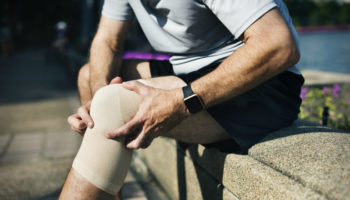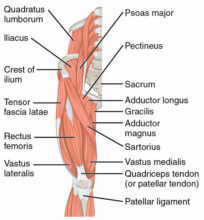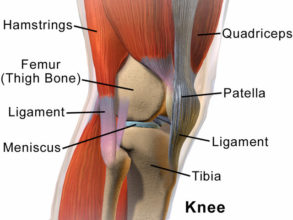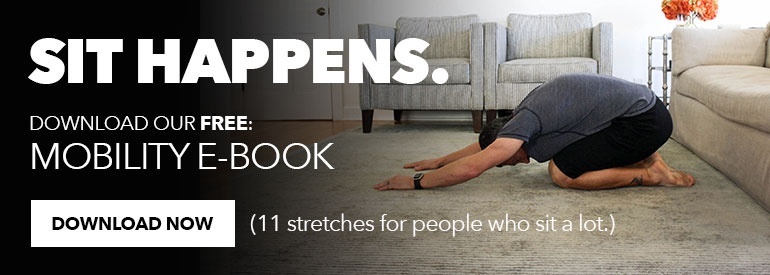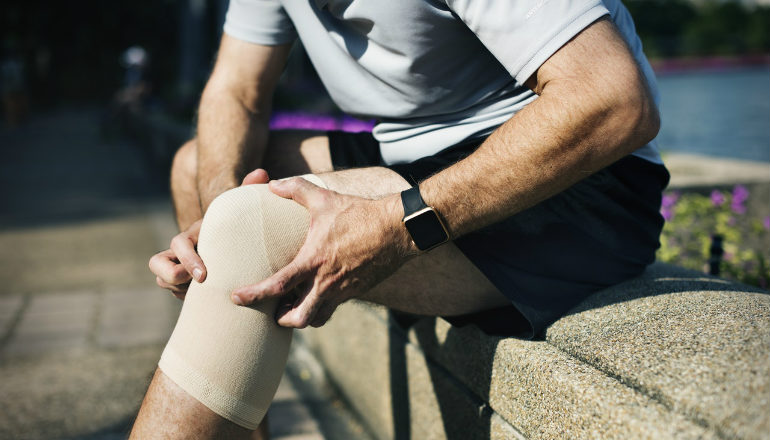 Reading Time: 6 minutes
Reading Time: 6 minutesFor those of us who train regularly, knee pain can be a source of aggravation. It results in needing to modify your training, taking time off, and maybe even surgery. And it requires extra time with your physical therapist, chiropractor, and/or massage therapist.
Today, we’re going to talk about one specific type of knee pain — pain in the patellar tendon of your knee. Most people don’t know what to do about this type of pain when it happens, let alone know that they can treat it themselves and even prevent it from happening in the first place.
How We Ended Up With Knee Pain to Begin With
Let’s start at the beginning. If you’re a follower of my work (and I hope you are), you’ve heard me pontificate on the ills of our overly sedentary way of life: how our muscles get too tight, our connective tissue less pliable, our chi stagnant and stale. These are the pitfalls of our modern world. The onus is on each of us as individuals to take the initiative to keep ourselves active and healthy — and, wonderfully, more and more of us are out there doing so.
But what most people don’t realize is that it’s not enough to train your butt off for an hour or two and then slip back into the sedentary routine. Consider this: what’s the purpose of going from being sedentary for 24 hours a day to just 22 hours a day?
In fact, in doing so, we open ourselves up to complications that can arise from the tightening of our muscles due to exercise combined with a lot of sitting throughout the day. This leads us back to knee pain related to our mobility practice, specifically in the patellar tendon.
In an ideal world, each of us would allocate five to ten minutes each hour to move around, limber ourselves up, mobilize, and then get back to crushing that quarterly earnings report. However, time is money and while progress has been made, not all companies are rallying around the culture of more movement is better (not yet anyways). But I digress, we were talking about the state of your knees.
Your quads are designed to be a primary mover when it comes to squatting, moving weighty objects, climbing stairs, and general locomotion. When we sit for extended periods, those muscles are essentially in a perpetual state of squatting. This can cause the front of the hip to shorten and get tighter. Combine that with an active training routine that regularly works the legs, which then subsequently grow tighter from the combined efforts of your training and constant sitting, and you have a recipe for knee pain or patellar tendonitis down the road.
The source of this pain usually originates in the front of the hip and quad muscles, but the pain itself usually shows up just below the knee cap. Now, we have to get into a little anatomy here so bear with me.
The Role of the Quads in Our Patellar Tendon Pain
Your quad muscles originate in the front of your hip (the anterior region) and they run down the leg and attach at the knee. The quad muscle isn’t just one muscle but four individual muscles. Working our way from the inside of the leg outward, they are known as vastus medialis, rectus femoris, vastus intermedius, and vastus lateralis.
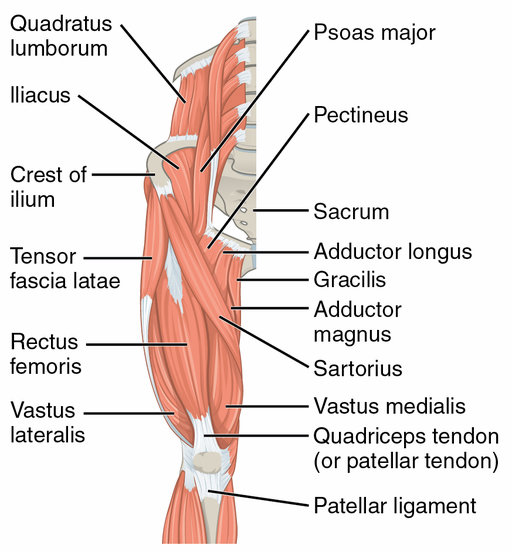
Rectus femoris and vastus intermedius will be our focus in this article as they are the most likely cause of patellar knee pain. But when addressing the mobility of the quad, all four of these bad boys should receive some attention as they all have some influence on this type of knee pain.
When it comes to patellar knee pain, rectus femoris and vastus intermedius are often times at the heart of it. These muscles originate not only in the front of the hip, but rectus femoris also attaches to the pelvis itself.
When we sit for long hours, we’re compressing these muscles. This is problematic as rectus femoris and vastus intermedius run along the center of the leg and then terminate in the quadriceps tendon, which encases the patella (or kneecap) and combines with the patellar ligament, which connects the kneecap with the shin bones of the lower leg.
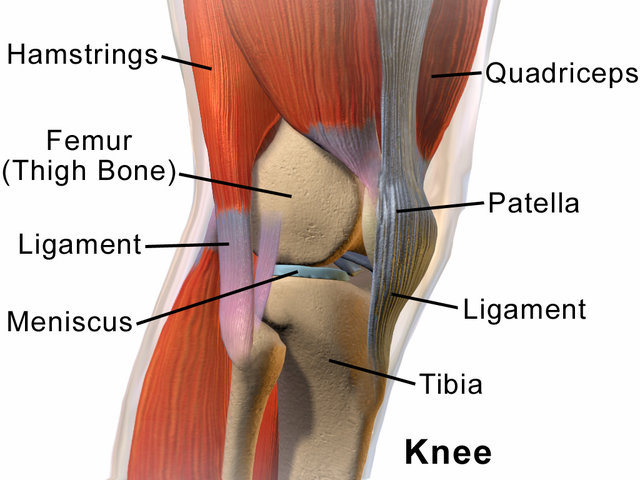
When the quad muscles get tighter, they get shorter. They have less range of motion and this tightens the tendons and ligaments at the knee where the quad muscles connect to the knee joint. When these tissues have no slack in them, this results in knee pain while squatting since there isn’t any slack in the tissues to allow for the stretching they endure while in a squat.
What can be done about this? That’s a good question, so let’s unpack that.
1. Use a Lacrosse Ball on Your Knees
One of the first things to be done is to give the muscles and connective tissue above your knee some much needed TLC. In this first video, I’m going to walk you through a lacrosse ball technique that can be done wherever you can find a spot on the ground, which should be just about anywhere. Use this to break up the trigger points and tight muscle fibers around the upper knee before working your way up your body.
2. Foam Roll Your Quads
It may seem like a no-brainer, but it’s worth talking about the appropriate way to foam roll your quads. Most people are only getting a small degree of the benefit they should from this practice due to a few key points that I make in this video.
3. Do the Couch Stretch
Much like the quest for the source of the Nile, we find ourselves having made quite an epic journey from our knee pain, up the vast expanse of our mighty quads, to finally discovering the source of the knee pain that has unnecessarily hobbled us.
Of course, I’m talking about the anterior hip.
This video details a stretch you can do most anywhere you find a wall, couch, or anything that allows you to get into the quad muscles and the hips themselves. Keep in mind you may only feel this in the quads at first, but with patience and time you will feel it in the front of the hips as the quads loosen up and your mobility improves to the point that you can adequately stretch the front of the hip.
Patellar pain is only one type of knee pain, but fortunately it’s one we can most often handle on our own without medical intervention. I’ve often said that a little over the long term is the best recipe for success in health and fitness. Take these tools and use them a little every day and you’ll find you not only ease the pain you’ve been feeling in your knees, but you also prevent it from coming back.
